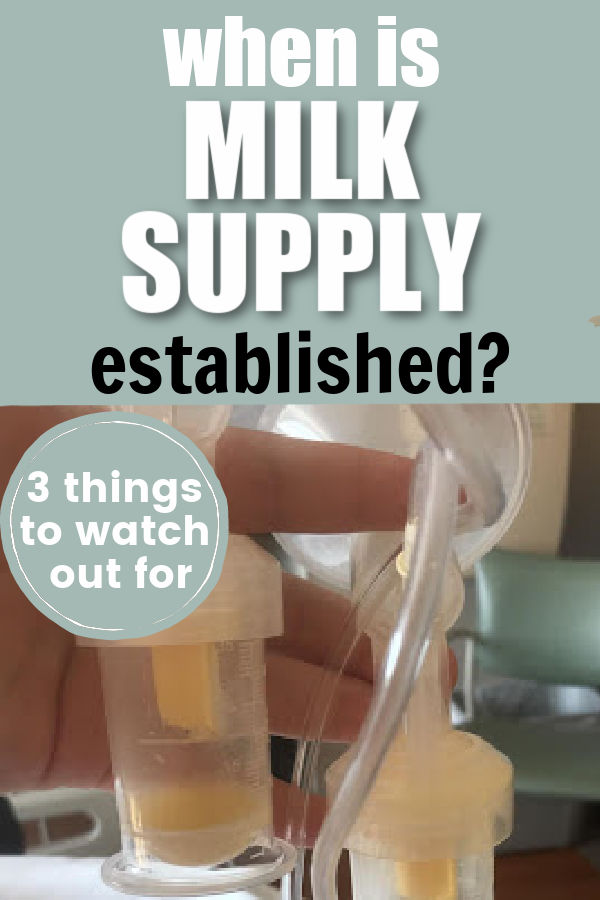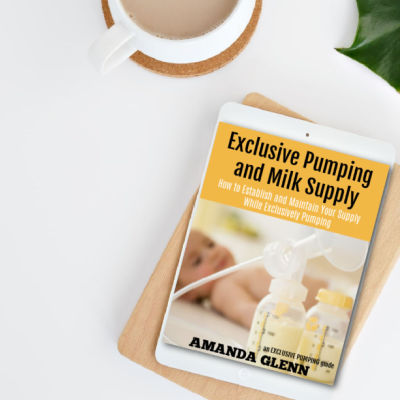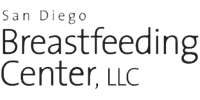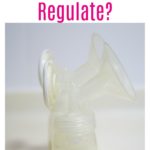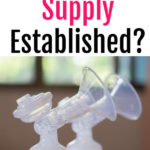You may have heard about establishing supply when breastfeeding. What does this mean, and when is milk supply established? Here’s what to look for.

This post may contain affiliate links, which means if you click a link and purchase something, I may make a small commission at no additional cost to you. I only recommend products I love! More information here.
Stages of milk production
To understand supply regulation, it’s helpful to know how milk production works. At a high level, there are three different stages of milk production.
1. Colostrum
During the late stages of pregnancy and in the first few days after your baby is born, your breasts produce a thick milk called colostrum.
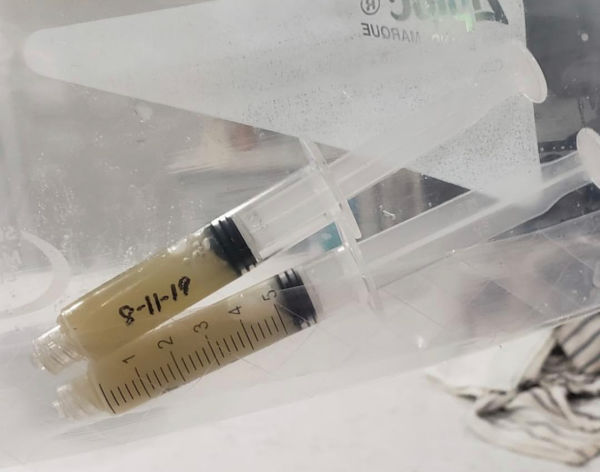
The hormone progesterone, which is present in high amounts throughout pregnancy, keeps the milk volume produced low.
2. Initial milk production
After your baby is born and the placenta is delivered, your estrogen and progesterone levels drop dramatically.
This hormone withdrawal, along with high levels of prolactin present after birth, causes initial milk production to kick into high gear. This happens 1-3 days after birth when your milk comes in.
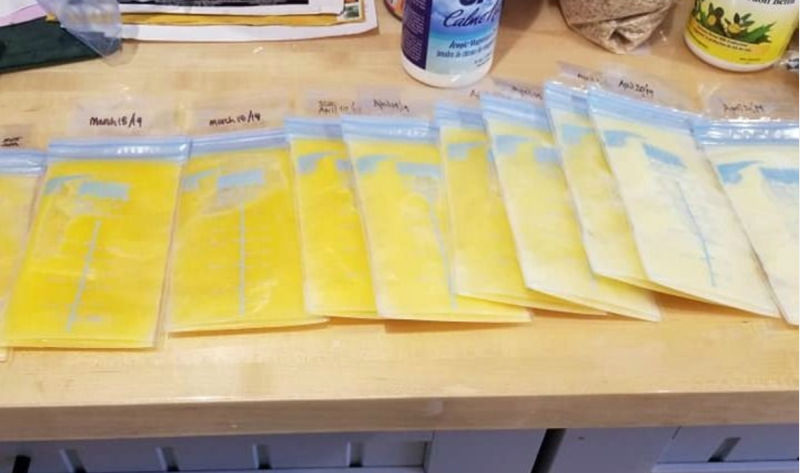
3. Breastfeeding supply and demand
Later, the milk production process switches to being driven solely by breastfeeding supply and demand.
This means that the demand – the milk that is removed from your breasts (by either a baby or a breast pump) – controls the supply, or how much milk your body produces.
What is supply regulation?
Supply regulation refers to when the hormonal effects on supply that drive the first two stages of milk production peter out, and your milk supply is based entirely on demand, versus hormones.
This is also referred to as “established lactation” or an “established milk supply.”
So when is milk supply established? When does milk supply regulate?
In the vast majority of cases, this happens sometime in the first 12 weeks, usually between 6-12 weeks postpartum.
This doesn’t mean it happens exactly at 12 weeks; there is nothing magical that happens to your breasts at midnight on your baby’s 12 week birthday. It can happen at two weeks postpartum, or it can happen later than 12 weeks. However, for most women, supply has regulated by the 12 week mark.
What changes when your supply regulates? What are the signs of an established milk supply?
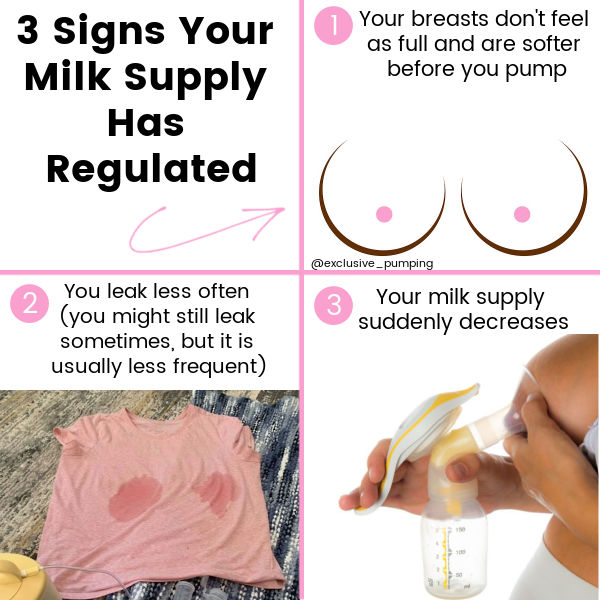
When your supply regulates, you may notice the following:
- Your breasts don’t feel as full and are softer and you experience engorgement less frequently
- You leak and randomly letdown less often
- Your overall milk supply decreases
The reason that your milk supply might decrease when your supply is established is that your body will match your supply to what you’ve been removing from your breasts.
Before my supply regulated, I skipped pumping sessions more often than I should have, and then when the hormone boost when away, I lost a lot of supply.
Supply loss is less likely if you are consistently removing the necessary amount of milk in the early weeks of breastfeeding.
Will you notice supply regulation?
Supply regulation can happen suddenly, where you wake up one morning and notice your supply has decreased and you aren’t leaking anymore.
Or it can happen gradually, over a few weeks, so that you don’t even really notice or know when it happens.
I had it happen both ways – with the baby I exclusively pumped for, my supply regulated overnight and the difference was obvious. For the two babies I nursed, I’m not sure when my supply regulated.
Need help with exclusive pumping? Use EPUMP30 for 30% off
What should you do to be prepared for your supply to regulate?
First, make sure that your pumping schedule has enough sessions and pumping time. If you’re exclusively pumping and your baby is less than six weeks old, you should be pumping at least seven times per day, and your total pumping time in a day should be at least 120 minutes.
You can see some sample pumping schedules here.
The other thing that you should do to be ready for supply regulation is to stick to your pumping schedule.
You need to ensure that the demands you’re making via your breast pump (or baby, if you nurse) match the supply that you want to have.
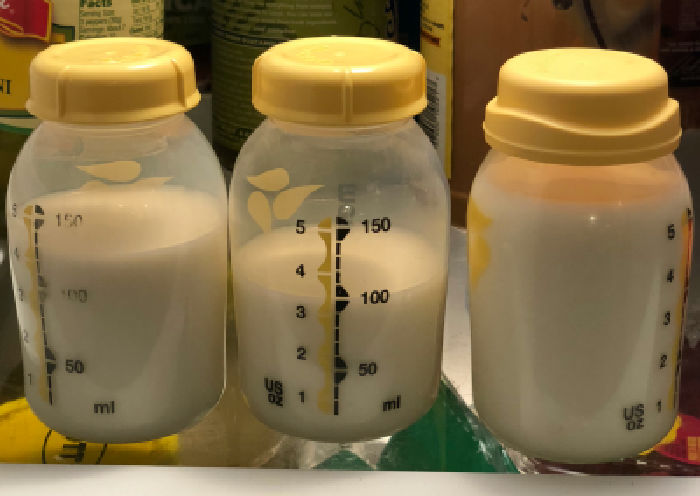
What should you do if your supply regulates and you lose supply?
Try not to freak out – it’s still early, and you likely can get at least some supply back.
Here’s what you can do.
1. Look at your pumping schedule
If you weren’t already on a pumping schedule, make sure you get on one that meets the above guidelines for number/length of sessions – and stick to it consistently.
2. Try oatmeal or power pumping
Oatmeal and power pumping are easy options for increasing milk supply where there is little or no cost or risk, so that’s what I’d start with.
3. Consider supplements
Supplements can also help increase milk supply if necessary.
When my milk supply regulated, I went from having a supply of about 35 oz per day to 24 oz per day overnight. I used fenugreek and was able to get it back up within several weeks, along with being much more consistent with my pumping schedule. However, supplements have risk associated with them – some people actually lose supply with fenugreek – so I would try other options first.
More on increasing milk supply here.
Has your milk supply regulated? What was your experience?
References
- Bonyata, Kelly, IBCLC. “My breasts feel empty! Has my milk supply decreased?” https://kellymom.com/ages/older-infant/breast-fullness/
- Bonyata, Kelly, IBCLC. “How does milk production work?” https://kellymom.com/bf/got-milk/basics/milkproduction/
